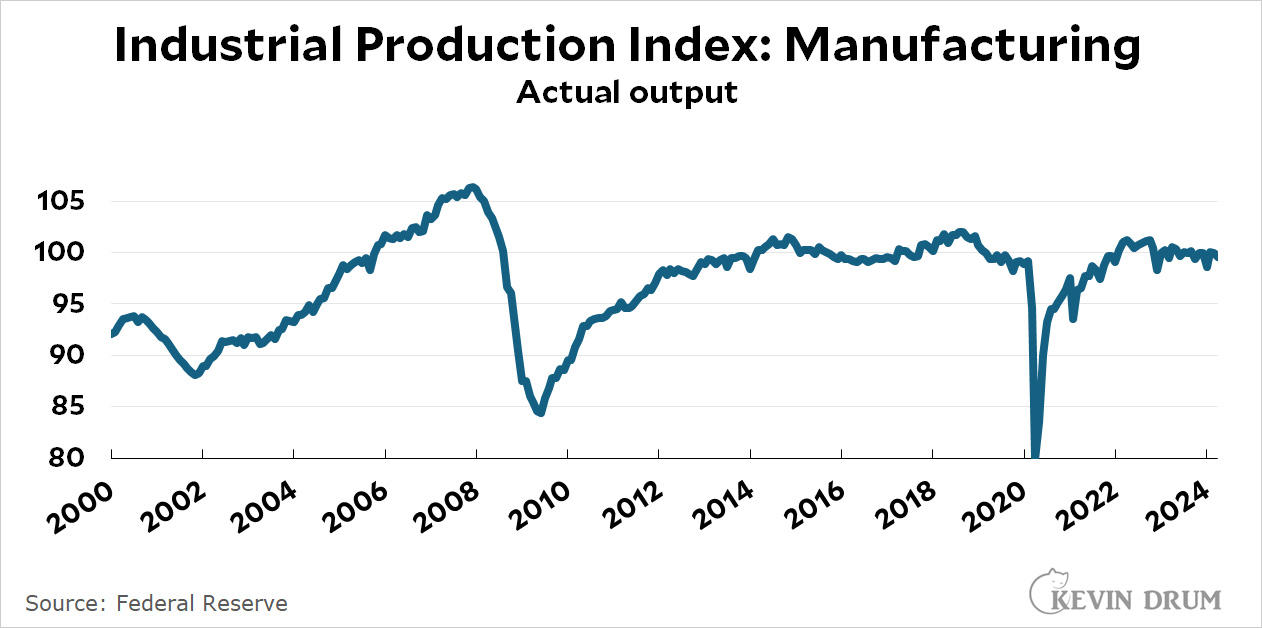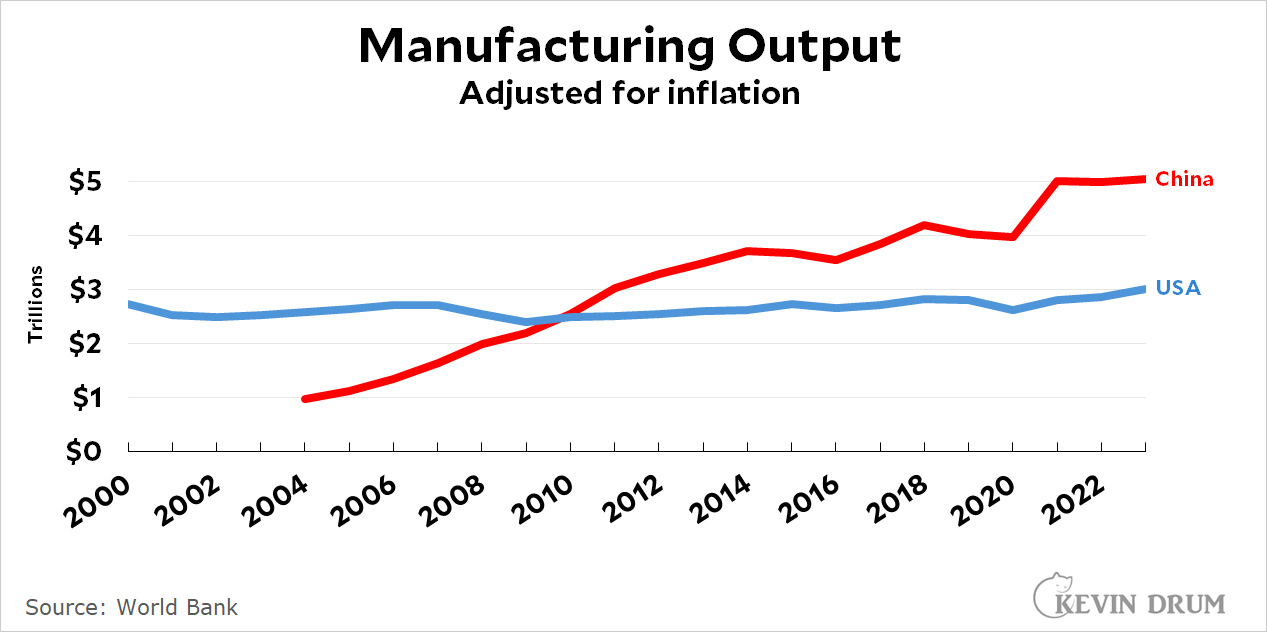Normally presidential candidates try to play down their prospects before a debate. That way they have a better chance of "beating expectations."
Does this work? I've always had my doubts. But we're about to get a destruction test of the theory from Joe Biden—though not from the candidate himself. From his opponent. Donald Trump has spent so much time claiming that Biden is a doddering old man that Biden will beat expectations if he just manages to stay upright for 90 minutes.
My money still says it doesn't matter. Regular people just judge on vanilla performance while political pros are in on the game. Neither cares about expectations.
What will happen, though, is a super heightened sensitivity to every facial tic and pause from Biden. Just wait and see. At the other podium, Trump will ramble mindlessly the way he always does these days, but he'll get nothing more than the usual fact check that no one pays attention to.










